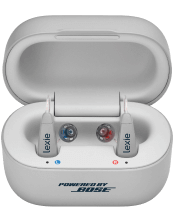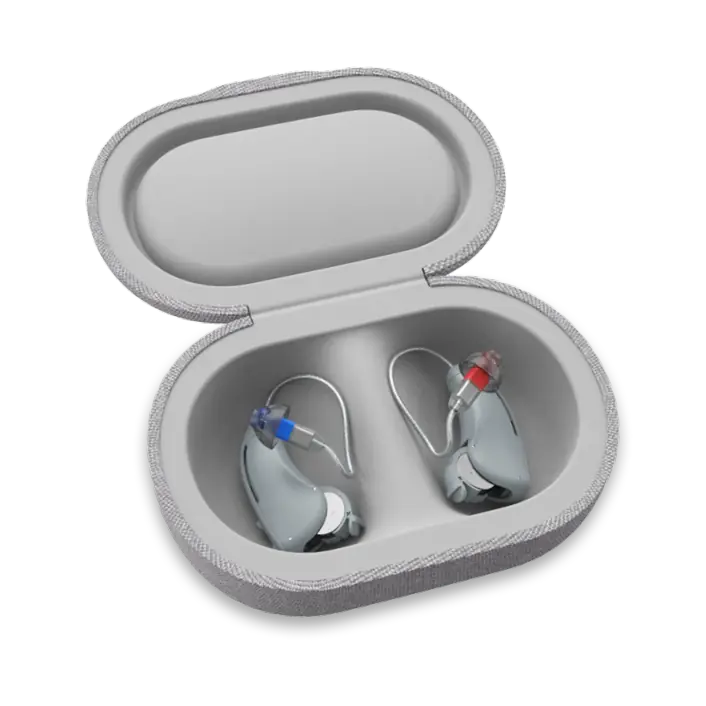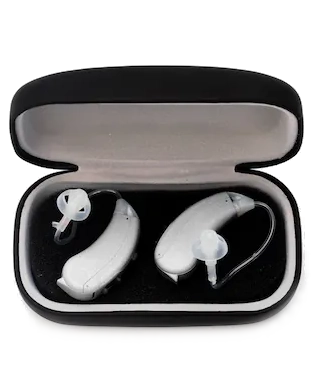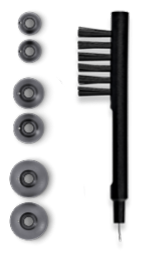What is Acoustic Neuroma?
Published: September 22, 2021
Updated: December 21, 2021
What is an acoustic neuroma? An acoustic neuroma also referred to as a vestibular schwannoma, is a slow-growing benign (non-cancerous) tumor that forms on the hearing and balance nerve. The tumor is a result of an overproduction of Schwann cells; cells responsible for covering and insulating nerves. Research shows that more than 3300 acoustic neuromas are diagnosed yearly in the United States, indicating an incidence of approximately 1 per 100,000 individuals, with the incidence increasing with age.
Symptoms to look out for
Some individuals may not have any of the usual symptoms associated with an acoustic neuroma, particularly when the tumor is small in size. However, as the tumor grows it may begin to press onto the hearing and balance nerves, causing a sudden sensorineural hearing loss and/or imbalance, vertigo, and dizziness in patients. In some instances, even a small tumor can cause a significant hearing loss depending on its location. Other common complaints in patients affected by an acoustic neuroma are tinnitus (ringing in the ear) or a feeling of fullness in the ear. An individual may also experience great difficulty understanding speech even though his/her hearing loss may not be as severe.
In the majority of instances, the hearing loss experienced is single-sided in nature. However, a bilateral neuroma may occur occasionally, therefore affecting both hearing nerves. This is usually due to a genetic disorder referred to as neurofibromatosis type 2 (NF2). Individuals affected by NF2 are at risk of developing multiple brain and spinal cord tumors.
While a comprehensive hearing test may indicate the possible presence of an acoustic neuroma, an amagnetic resonance imaging (MRI) scan is needed to confirm the diagnosis. MRI scans can detect tumors as small as 1 mm in size.
Treatment options and prognosis
Apart from the associated symptoms discussed above, a growing acoustic neuroma may also cause facial numbness, weakness, or paralysis. A very large tumor may even begin to press against nearby brain structures such as the brainstem and the cerebellum thus becoming life-threatening.
There is no best way to treat an acoustic neuroma. Depending on the size, location, and other health aspects, a specialist may choose one of the three options below:
- Observation: Your specialist may choose to keep a close eye on the tumor if it is small and not growing. If it is growing at a high rate, he may choose one of the two options below.
- Surgical removal: The outcomes of this approach may depend on the size of the tumor. A person’s hearing may be saved when the tumor is small in size. However, surgical removal of larger tumors may be more difficult as it may have already damaged the hearing and balance nerves. Other nerves in the brain such as the facial nerve may also be affected.
- Radiation: In some instances, particularly when treating the elderly, individuals with poor medical health, and those with bilateral neuromas, radiation therapy may be chosen as the form of treatment. Radiation therapy may help to shrink the size of the tumor and prevent it from growing larger, however, one’s hearing may still be affected.
Possible amplification options
Many people may believe that it may not be a problem if only one ear is affected by a hearing loss, as they feel that the other ear can compensate. However, this is untrue. People with a single-sided hearing loss experience difficulty hearing in the presence of noise and are unable to localize sounds (to tell which direction sounds come from). Your hearing health care professional may suggest amplification to assist to overcome these difficulties.
A traditional hearing aid may be recommended on the affected side if a functional hearing was able to be preserved after treatment. However, if the acoustic neuroma and treatment have resulted in permanent single-sided deafness, your hearing healthcare professional may recommend the following options:
- CROS/BICROS hearing aids
CROS hearing aids are designed to help the user overcome the “head shadow” effect of a single-sided hearing loss. The head shadow effect is when a sound that comes to the ear with hearing loss needs to be processed by the “good” side but is blocked by the head. The CROS system requires a person to wear 2 devices, a microphone in the “bad” ear and a hearing aid in the “good” ear. The microphone will collect sound and transmit it wirelessly to the “good” side. BICROS hearing aids work in a similar fashion, however, they are used when a person has some degree of hearing loss in the “good” ear and therefore are also able to amplify sounds. - Bone anchored hearing aids
This option requires a minor surgical procedure to insert a metal device that is implanted into the skull behind the ear. A processor is attached to this metal device by a screw or a magnet. The processor collects sound and causes the metal implant to vibrate. Vibrations are carried directly to the cochlear of the “good” ear where it is perceived as sound. A criteria for this device is that the opposite ear must have normal hearing. - Cochlear implant
Cochlear implants may be an option after the removal of an acoustic neuroma if the cochlear nerve is still intact and functional. A surgical procedure is also needed to insert this device. It consists of a processor worn behind the ear, a receiver and stimulator which surgically placed on the skull bone, and an electrode array that is implanted directly into the cochlear. A cochlear implant directly stimulates the auditory nerve, bypassing any damage in the cochlear. Sound provided by a cochlear implant is very different from normal hearing and may take time to learn and adjust to. - Auditory brainstem implant (ABI)
This device is a good option for those individuals affected by NF2. A paddle electrode is implanted in the auditory brainstem, thus allowing sound to bypass any damaged auditory nerves.
Conclusion
While an acoustic neuroma is benign in nature, it may still have a serious impact on one’s hearing and quality of life. Treatment is tailored according to each individual’s needs, depending on the size and location of the tumor. Overall, if necessary, the removal of smaller tumors has demonstrated higher success rates on hearing outcomes than the removal of larger ones. Hence, it is important to consult your hearing health care professional as soon as any of the symptoms discussed above are experienced.
Lexie Hearing
You can learn more about your hearing loss by taking Lexie’s free online hearing test. Should you have any questions, our team of hearing experts will be happy to answer them. Click here to contact us today.






